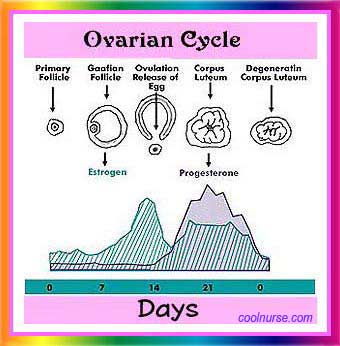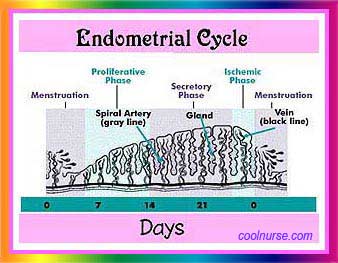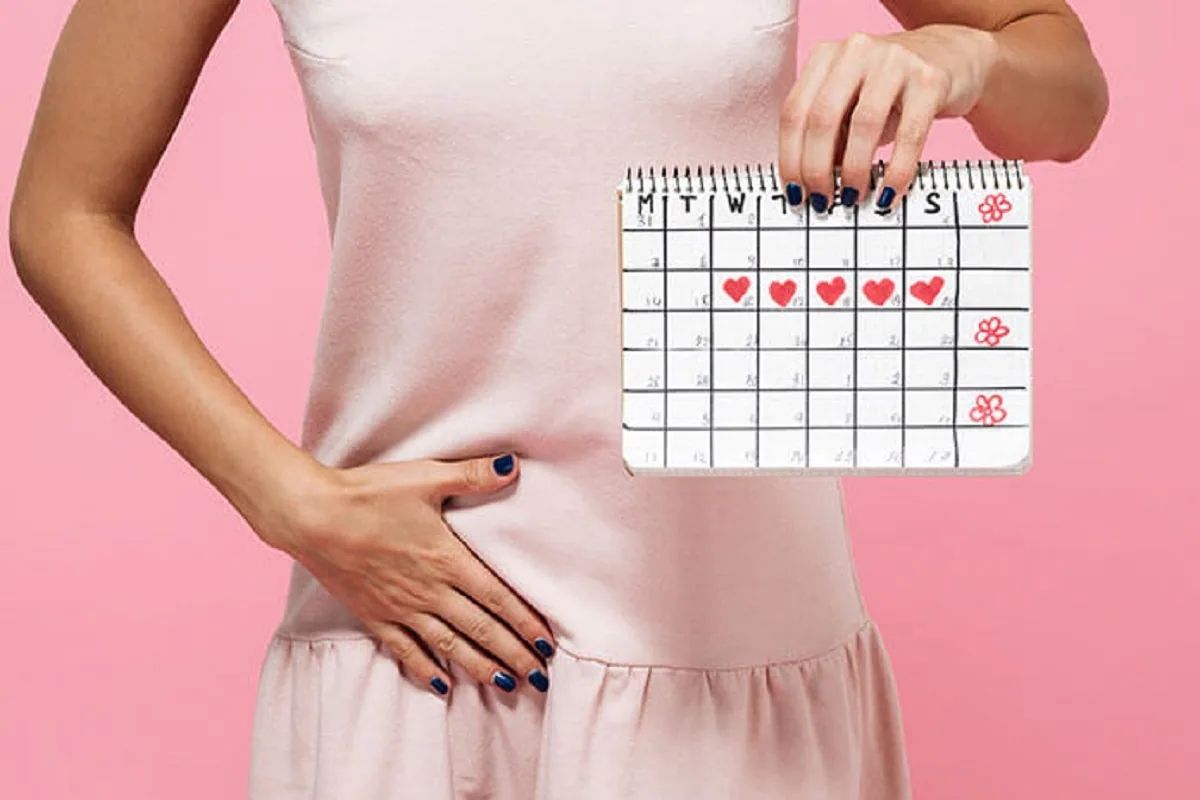What You Need To Know About Menstruation
 If you’re a teenage girl you probably have started having a period. If you have not, you might be anxious about the subject or a bit concerned. This whole menstruation thing might seem a bit mysterious, it is to many young women. It’s actually very complex, but interesting too.
If you’re a teenage girl you probably have started having a period. If you have not, you might be anxious about the subject or a bit concerned. This whole menstruation thing might seem a bit mysterious, it is to many young women. It’s actually very complex, but interesting too.
Menstruation is the outward proof that a girl is becoming a woman. Having a period is your body’s way of saying it’s functioning properly.
During puberty, hormones are released from the brain that stimulate the ovaries. The ovaries then produce estrogen and progesterone — hormones that cause the eggs in the ovaries to mature so the woman can become pregnant when she chooses to. Here’s how the process goes:
Every month, one egg leaves one of the ovaries on its way to the uterus via the fallopian tubes. Meanwhile, in preparation for the egg, the uterus starts to develop a thicker lining and it’s walls become cushiony (the endometrial lining). If the egg reaches the uterus and is fertilized by a sperm cell, it attaches to this cushiony wall.
Most of the time the egg just passes right through without fertilization. Since the uterus no longer needs the extra blood and tissue which made up the walls thick, it sheds them by way of the vagina. This cycle will happen nearly every month until the ovaries stop releasing eggs, usually several decades later. (Menopause).
 Periods are different for every woman. Some girls start menstruation when they’re 9 or 10; some in their late teens. The length of the cycle also varies. Some periods last longer than 28 days, some shorter. If you have just begun your menstruation, your body will need time to regulate itself to these changes. Your periods might be a bit erratic at first. You may have two cycles in one month and miss having one the next month. How long your period lasts also varies . Some girls have their periods for only 3 or 4 days, others as long as a week. The menstrual flow of blood can vary from woman to woman also.
Periods are different for every woman. Some girls start menstruation when they’re 9 or 10; some in their late teens. The length of the cycle also varies. Some periods last longer than 28 days, some shorter. If you have just begun your menstruation, your body will need time to regulate itself to these changes. Your periods might be a bit erratic at first. You may have two cycles in one month and miss having one the next month. How long your period lasts also varies . Some girls have their periods for only 3 or 4 days, others as long as a week. The menstrual flow of blood can vary from woman to woman also.
Some girls may have body and or mood changes around the time of their period. Menstrual cramps are pretty common during the first few days of your period. These are most likely caused by prostagladins. Prostaglandins causes the muscles of the uterus to contract. These cramps tend to become less uncomfortable and sometimes even disappear completely as a girl gets older. Over-the-counter pain medication like ibuprofen or acetaminophen can often give relief; if not, a health care provider can help. If your cramps are very severe, see a gynecologist.
As your period approaches, you may experience premenstrual syndrome ( PMS). You may find your emotions amplified during this time. Many women get depressed, irritated, angry, and others cry more than usual or get cravings for certain foods. PMS may be related to changes in hormones. Hormone levels rise and fall during a menstrual cycle, affecting the way a female feels both mentally and physically.
Emotions can become more intense than usual, and many women may feel bloated because of water retention. When your period begins, PMS usually goes away. You may also have acne flare-ups.
Periods are a complex part of puberty, but also your body’s way of telling you it is functioning properly and you have taken good care of it. You can still exercise, swim and do everything you enjoy. If you have any questions about periods, ask a parent, health teacher, health care provider, or nurse. You can also ask friends or sisters who have already had their periods. In time you will see that periods are a normal and routine part of your life.

The Menstrual Cycle
The “typical” menstrual cycle occurs regularly over 28 days. Most women have cycles with an interval that lasts from 21 to 35 days. Frequently cycles are unusually short or long during adolescence.
THE FIRST HALF OF THE MENSTRUAL CYCLE (Day 1 to About Day 14 in a 28-Day Cycle)
The Menstrual Phase
The first day of your menstrual period is considered Day 1 of your cycle. The menstrual phase includes your period. During this time, the endometrium (the built-up lining of the uterus) is shed, along with a little blood. Many of the problems that women experience with their menstrual cycle occur during this phase. For example, some women experience menstrual disorders such as dysmenorrhea (painful periods) or menorrhagia (unusually heavy periods).
The Follicular/Proliferate Phase
During the proliferate phase, the body produces a hormone called follicle-stimulating hormone (FSH). Follicle-stimulating hormone promotes the growth of a follicle (egg sac) within the ovary. An ovum (egg) matures in the follicle during the proliferative phase. FSH also stimulates the ovary to produce increasing amounts of estrogen. In turn, the estrogen causes endometrial tissue to build up (or proliferate), lining the interior of the uterus.
THE MIDPOINT OF THE MENSTRUAL CYCLE (About Day 14 in a 28-Day Cycle)
The mature ovum bursts from the follicle about midway (approximately 2 weeks before onset of next menstrual period) through the menstrual cycle. This process is known as ovulation. The ovum then travels from the ovary down the fallopian tube, and into the uterus.
The Luteal/Secretory Phase
Once the ovum has been released, the follicle becomes a sac known as the corpus luteum (“yellow body,” because it contains yellowish, fatty matter). A hormone called luteinizing hormone (LH) causes the corpus luteum to grow and to secrete progesterone, another female hormone.
During the secretory phase, progesterone makes the endometrial lining stronger and spongy in texture. Progesterone also stimulates glands in the endometrium. These glands produce uterine fluid, and their purpose is to support embryonic development if fertilization has occurred at or around the time of ovulation. It is in this phase of the menstrual cycle that women who suffer from premenstrual syndrome (PMS) may begin to experience their symptoms. Generally symptoms are worse during the last seven to ten days of the cycle, ending at or soon after the start of the menstrual period. In a woman who hasn’t become pregnant, the level of progesterone peaks about a week after ovulation and then begins to drop along with the estrogen level. The flow of blood to the endometrium decreases, and its upper portion is broken down and shed during menstruation. At the same time, the corpus luteum withers.
The dip in estrogen and progesterone at the end of the cycle help let the body know that it’s time to start the cycle all over again. The menstrual cycle doesn’t have to be a drag, it actually shows how complex your body is and a sign that it is functioning properly! Congratulations, you are a woman and being a woman is terrific!
The Charts
The Ovarian Cycle chart shows the maturation and deterioration of the ovum and how it occurs every month.

The Endometrial Cycle chart shows how the endometrial lining builds up during the normal menstrual cycle and then is broken down and shed during menstruation (menses). Meanwhile at the same time back at the Ovarian Cycle chart, the corpus luteum withers.

A ren’t women amazing! The menstrual cycle is actually a very cool and very complex process that results from the many parts of the body working together. The brain, the ovaries, the adrenal glands and even the thyroid, all have to come together with their different hormonal and chemical influences. I guess you could say it is kind of like a small orchestra in your body.
Recommended reading :
Gynecology , painful periods and PMS. Check out the sexual faqs page 15 for how to insert a tampon. For honest information sexual health topics see:
![]() Get More Info on Fermalite for PMS Relief – This stuff works great according to many readers who have gotten relief from it.
Get More Info on Fermalite for PMS Relief – This stuff works great according to many readers who have gotten relief from it.
